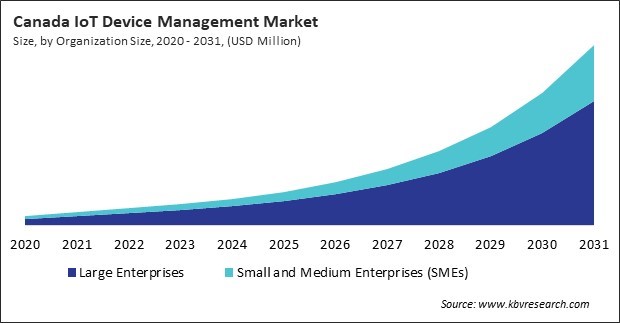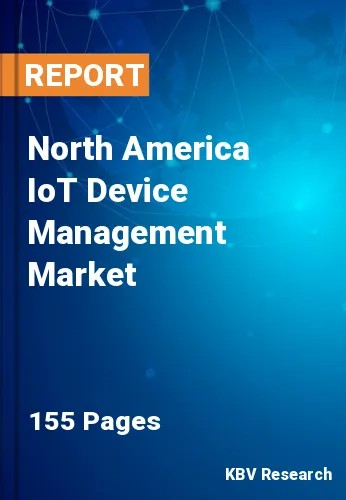The North America IoT Device Management Market would witness market growth of 29.9% CAGR during the forecast period (2024-2031).
The US market dominated the North America IoT Device Management Market by Country in 2023, and would continue to be a dominant market till 2031; thereby, achieving a market value of $6,559.9 million by 2031. The Canada market is experiencing a CAGR of 31.4% during (2024 - 2031). Additionally, The Mexico market would exhibit a CAGR of 31.1% during (2024 - 2031).

The Internet of Things (IoT) has emerged as one of the most transformative technological advancements in recent decades, revolutionizing industries and redefining how businesses operate. The fundamental concept of this revolution is the interconnection of devices that communicate with one another, process data in real-time, and provide actionable insights to enhance productivity, efficiency, and decision-making. With IoT adoption skyrocketing across healthcare, manufacturing, retail, transportation, agriculture, and smart cities, effective IoT device management has become paramount. This market, dedicated to managing IoT devices, has grown into a critical segment of the IoT ecosystem, ensuring that these devices function optimally, securely, and seamlessly in increasingly complex environments.
IoT device administration encompasses the procedures and instruments employed to configure, monitor, maintain, and secure IoT devices throughout their lifespan. As IoT devices proliferate, the challenges of managing them also grow exponentially. Each device is a node in a larger network, contributing data and functionality to interconnected systems. Without proper management, these devices risk becoming liabilities, potentially causing inefficiencies, operational disruptions, or even security breaches. The IoT device management market addresses these challenges by providing robust solutions for tasks such as onboarding devices, updating firmware, monitoring performance, troubleshooting issues, and ensuring compliance with security standards.
The automotive industry in Mexico is driving significant demand for IoT device management as IoT technologies become increasingly integrated into vehicle production processes. With Mexico ranking as the world’s seventh-largest passenger vehicle manufacturer, producing approximately 3.5 million vehicles annually, IoT device management solutions are critical for monitoring assembly lines, ensuring quality control, and optimizing supply chain operations. The production of electric vehicles (EVs) and hybrids, which grew by 8.5% in 2022, further underscores the need for robust IoT device management to handle the automation and real-time data analysis required in modern manufacturing environments. Thus, as IoT adoption across industries and industrial automation continues to grow, North America presents lucrative opportunities for the IoT device management market throughout the forecast period.
Free Valuable Insights: The IoT Device Management Market is Predict to reach USD 25.38 Billion by 2031, at a CAGR of 30.8%
Based on Organization Size, the market is segmented into Large Enterprises, and Small and Medium Enterprises (SMEs). Based on Component, the market is segmented into Solution (Real-Time Streaming Analytics, Security Solutions, Remote Monitoring, Device Management, and Network Bandwidth Management), and Services (Professional Services, and Managed Services). Based on Deployment Mode, the market is segmented into Public Cloud, Private Cloud, and Hybrid Cloud. Based on Vertical, the market is segmented into Manufacturing, Transportation & Logistics, Retail, Healthcare, Utilities, and Other Vertical. Based on countries, the market is segmented into U.S., Mexico, Canada, and Rest of North America.
By Organization Size
By Component
By Deployment Mode
By Vertical
By Country
Our team of dedicated experts can provide you with attractive expansion opportunities for your business.

